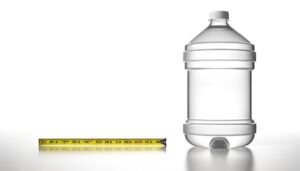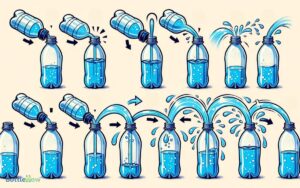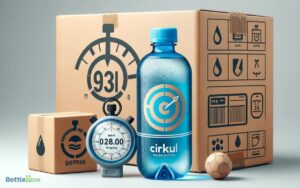Why Does My Metal Water Bottle Taste Weird
Your metal water bottle likely tastes weird due to oxidation and leaching from poor-quality materials or lack of proper coating, especially with acidic beverages. Residue build-up, including minerals, and insufficient rinsing of soap, can also alter taste.
Cleaning mistakes like not disassembling parts can trap unwanted residues. Water quality impacts taste, with chlorine or minerals from tap water possibly contributing.
Improper storage, such as not drying thoroughly, can cause mold and deteriorate the bottle. New bottles may also have manufacturing residues affecting taste.
Maintaining and selecting high-quality bottles minimizes such issues—discover more nuances to address these problems.
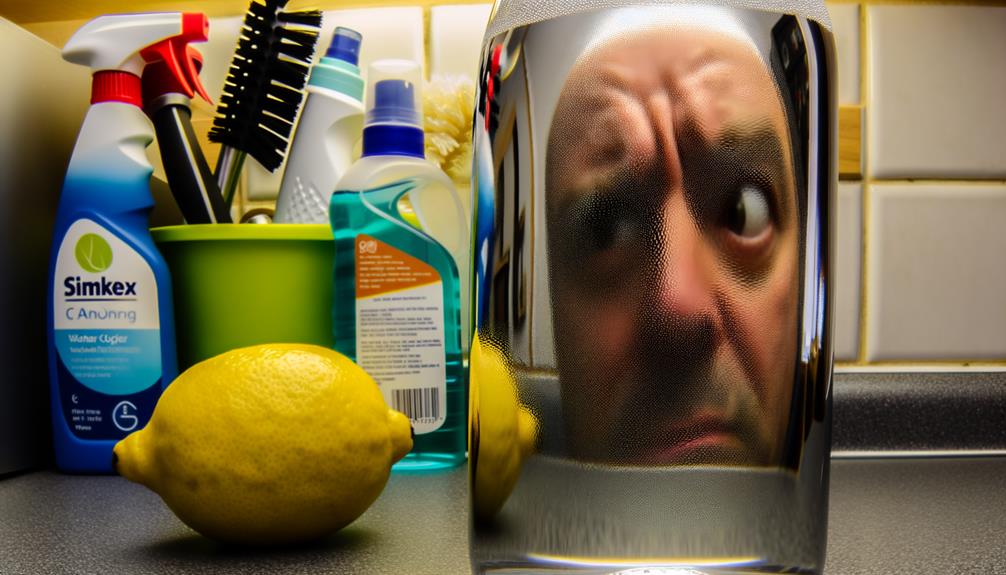
Key Takeaways
- Oxidation and Leaching: Metal water bottles can impart a metallic taste due to oxidation or leaching of metal ions without proper coating.
- Residue Build-Up: Accumulated minerals, soap residues, and bacteria can alter the taste if the bottle isn't cleaned regularly and thoroughly.
- Water Quality: Chlorine, minerals, and contaminants in tap water can cause off-taste; using filtered water can help.
- Improper Storage: Storing bottles with liquids for extended periods or not drying them properly can lead to mold and taste issues.
Material Reactions
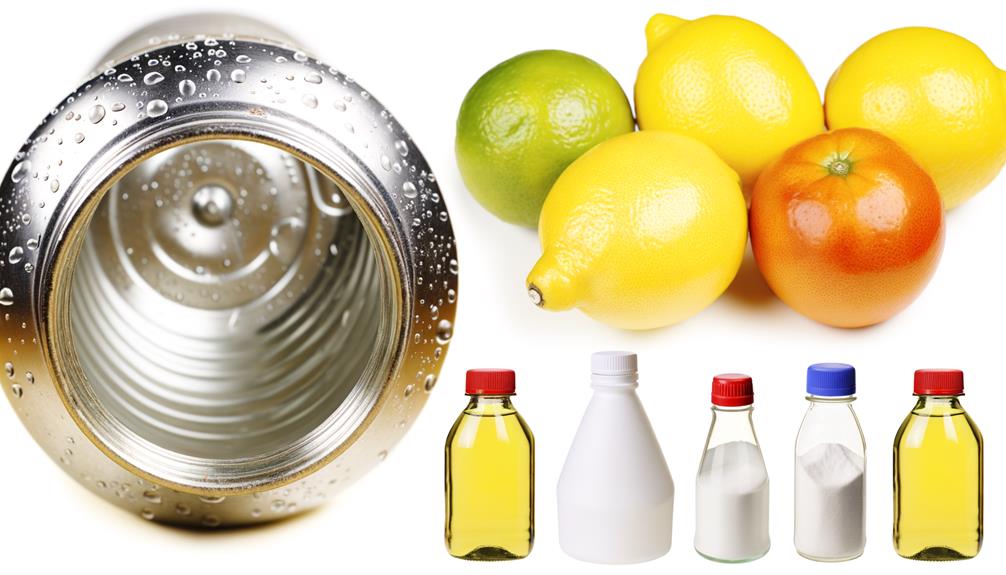
When you drink from a metal water bottle, the taste may be affected by reactions between the metal and the liquid. Stainless steel bottles, for example, can undergo oxidation, leading to a metallic taste. This occurs because the metal ions from the bottle can leach into the water, especially if the bottle isn't properly coated.
Aluminum bottles are usually lined with a resin or epoxy to prevent such reactions, but any damage to the lining can also result in a metallic flavor. Additionally, acidic beverages like citrus juices can accelerate these reactions, further altering the taste.
Ensuring your bottle is made from high-quality materials and inspecting it regularly for damage can mitigate these taste issues.
Residue Build-Up
Residue build-up inside metal water bottles can greatly impact the taste of your drink, making regular cleaning vital. Over time, minerals from water and residues from beverages can accumulate on the bottle's interior. This build-up can harbor bacteria and mold, which contribute to off-putting flavors.
Even trace amounts of soap or cleaning agents can alter the taste if not thoroughly rinsed out. It's essential to disassemble any removable parts, like lids and seals, to guarantee all areas are cleaned. Use a bottle brush to scrub the interior walls and reach all corners.
Regular maintenance helps prevent residue build-up, making sure your drink tastes as intended. Pay attention to any persistent odors, as they can indicate deeper residue issues.
Cleaning Mistakes
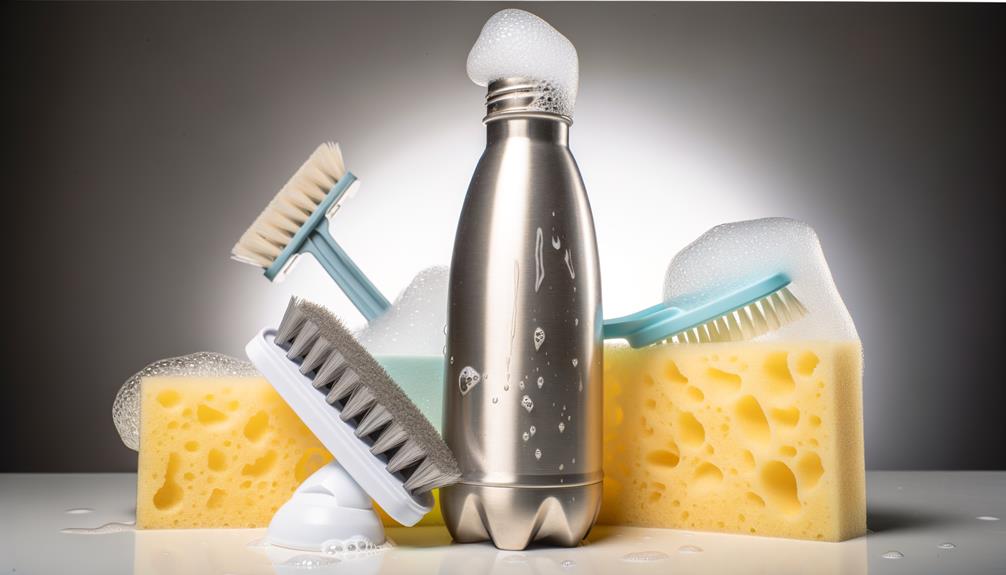
Failing to thoroughly clean all parts of your metal water bottle can lead to persistent taste issues.
Disassemble your bottle completely, including the cap, gasket, and any detachable components.
Use a bottle brush to scrub the interior walls and a smaller brush for the cap and threads.
Don't forget the gasket; residues can easily accumulate there.
Rinse all parts meticulously to guarantee no soap remains, as soap residue can contribute to unwanted flavors.
Air-dry the bottle upside down to prevent moisture buildup, which can harbor bacteria.
Avoid using harsh chemicals or abrasive tools that can damage the bottle's interior coating.
Regular, thorough cleaning is essential to maintain the integrity and taste of your drinking water.
Water Quality
The quality of water you use in your metal bottle greatly impacts its taste. Tap water often contains minerals, chlorine, and other additives that can react with the metal, producing an off-taste.
Hard water, rich in calcium and magnesium, can leave residues that alter the flavor. Using filtered water minimizes these issues, as it removes contaminants and excess minerals.
Additionally, stagnant water can develop a stale taste and harbor bacteria, so frequent refills with fresh water are crucial. If you're using well water, consider testing it for impurities that could affect taste and safety.
Always verify your water source is clean and free from chemicals to maintain the best taste in your metal water bottle.
Bottle Design
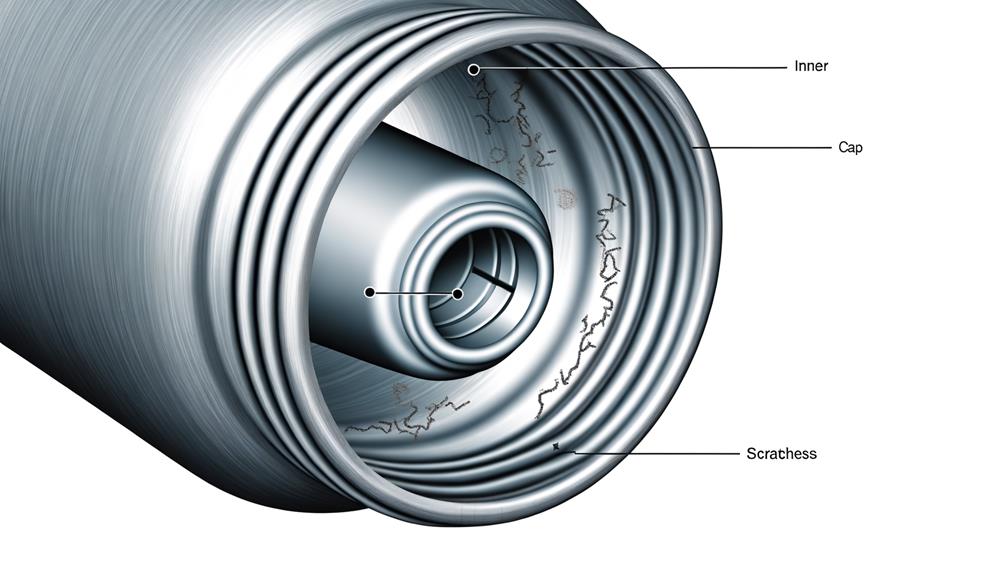
When considering metal water bottle taste issues, focus on the interior coating material and mouthpiece shape.
The interior coating can react with water, affecting taste, while the mouthpiece shape influences both flow and flavor perception.
Evaluate these design elements to mitigate any adverse taste impacts.
Interior Coating Material
Selecting the right interior coating material is essential for preventing metallic taste and ensuring the longevity of your metal water bottle.
Common materials include epoxy resin, ceramic, and stainless steel liners.
Epoxy resin coatings are durable and provide a barrier against metal leaching, but they can degrade over time.
Ceramic coatings offer a neutral taste and are resistant to high temperatures, though they may be prone to chipping.
Stainless steel liners are highly durable and corrosion-resistant, providing a clean taste, but they can be heavier.
When choosing, consider how each material interacts with your beverage, the coating's durability, and maintenance requirements.
Proper selection will minimize unwanted flavors and extend your bottle's lifespan, ensuring a better drinking experience.
Mouthpiece Shape Impact
Consider how the shape of the mouthpiece can significantly influence both the drinking experience and the potential for metallic taste in your water bottle.
A wide mouthpiece allows more air to mix with the water, which can enhance or amplify the metallic taste. Conversely, a narrow mouthpiece minimizes air exposure, reducing the perception of metal.
Additionally, the design of the mouthpiece affects cleaning efficiency. Complex shapes with grooves or ridges may trap residue, exacerbating taste issues over time. Opting for a smooth, simple design guarantees thorough cleaning and minimizes taste alterations.
Improper Storage
Improper storage of metal water bottles can lead to unpleasant tastes and potential health risks. You should always store your bottle in a cool, dry place. Avoid keeping it in direct sunlight or near heat sources, as extreme temperatures can cause metal degradation.
Never leave liquids in your bottle for extended periods, especially if they're acidic or sugary, as these can react with the metal, altering its taste and safety. Regularly clean and dry your bottle thoroughly before storage to prevent mold and bacterial growth.
If you use a bottle with a seal or gasket, make certain it's removed and cleaned to avoid trapping moisture. Proper storage practices maintain the bottle's integrity and ensure a fresh taste.
New Bottle Taste
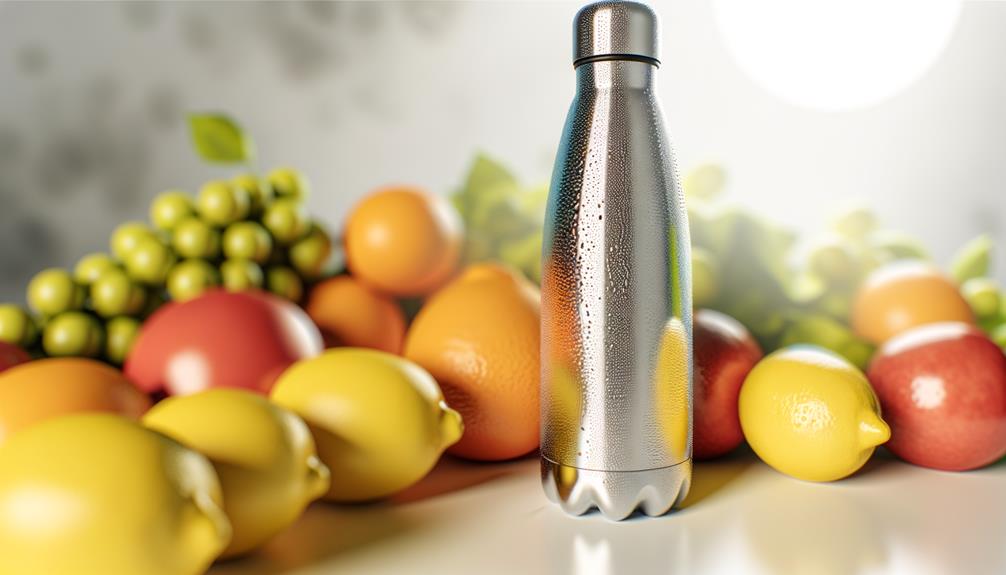
When you first use a new metal water bottle, you may notice a metallic taste that can be off-putting. This taste arises from residues left over from the manufacturing process, including oils, polishing compounds, and metal particles.
These residues can interact with water, giving it an unusual taste. Additionally, the interior surface of the bottle mightn't be completely inert initially, causing slight reactions with the water.
It’s essential to thoroughly clean your new bottle before use to minimize this metallic taste. Use warm water and mild dish soap, scrubbing all surfaces. Rinse thoroughly to guarantee no soap residue remains. To further remove metallic taste from bottle, consider filling it with a mixture of equal parts vinegar and water, letting it sit for a few hours before rinsing thoroughly. Alternatively, baking soda can be used as a natural deodorizer—simply add a tablespoon with warm water, shake well, and rinse completely. These methods help ensure your bottle remains fresh and ready for use.
This initial cleaning process helps remove manufacturing residues, reducing the potential for any lingering metallic taste.
Maintenance Tips
To keep your metal water bottle in ideal condition and prevent any future taste issues, regular and thorough maintenance is crucial. First, wash the bottle daily with warm, soapy water. Rinse thoroughly to remove any soap residue. Use a bottle brush to reach corners and crevices. For deeper cleaning, use a mixture of vinegar and water or baking soda and water once a week. Always let your bottle air dry completely before sealing it to prevent mold and bacterial growth.
| Task | Frequency |
|---|---|
| Daily wash | Daily |
| Rinse thoroughly | Daily |
| Use bottle brush | Daily |
| Deep clean (vinegar/baking soda) | Weekly |
| Air dry completely | After each wash |
Following these steps guarantees your bottle stays clean and taste-free.
Conclusion
So, why does your metal water bottle taste weird? It boils down to material reactions, residue build-up, and even improper storage.
Have you ever considered how water quality or cleaning mistakes might affect the taste? Addressing these factors through proper maintenance can make a significant difference.
Stay vigilant about cleaning and storing your bottle correctly, and you'll enjoy fresh-tasting water every time.
Don't let a simple oversight ruin your hydration experience.

